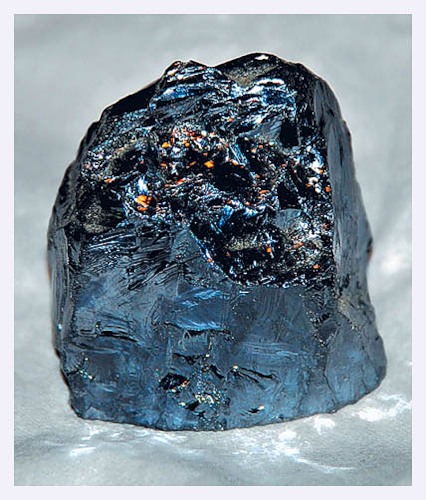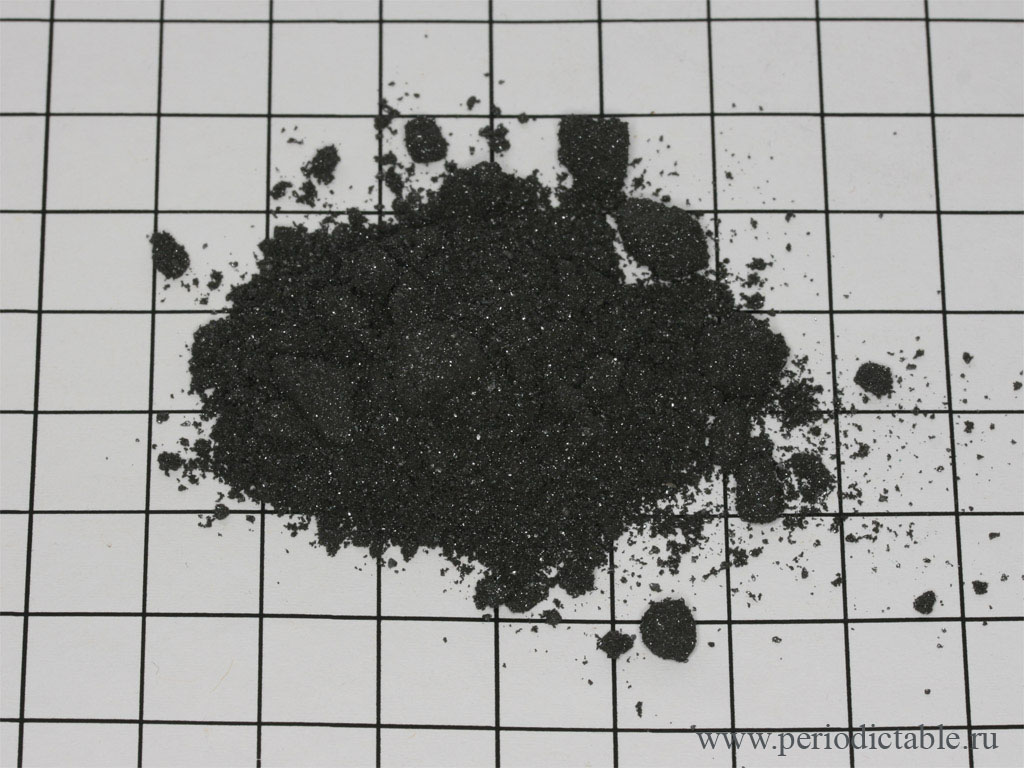Silicon

CPU? Sand? And what are your associations with this word? Or maybe Silicon Valley?
Anyway, we encounter silicon every day, and if you are interested in finding out what Si is and what it is eaten with, I ask for cat.
Introduction
As a student at a Moscow university with a specialty "Nanomaterials", I wanted to acquaint you, dear reader, with the most important chemical elements of our planet. For a long time I chose where to start, carbon or silicon, and yet decided to dwell on Si, because the heart of any modern gadget is based on it, if I may say so of course. I will try to express my thoughts in a very simple and accessible way, having written this material, I expected, mainly for beginners, but more advanced people will be able to learn something interesting, I would also like to say that the article was written solely for expanding the horizons of those interested. So let's get started.
Siliconium
Silicon (lat. Silicium), Si, chemical element of the IV group of the periodic table; atomic number 14, atomic mass 28.086.
In nature, the element is represented by three stable isotopes: 28Si (92.27%), 29Si (4.68%) and 30Si (3.05%).
Density (at NU) 2.33 g / cm³
Melting point 1688 K

Si powder
History reference
Silicon compounds, widespread on earth, have been known to man since the Stone Age. The use of stone tools for labor and hunting lasted for several millennia. The use of silicon compounds, associated with their processing - glass manufacturing - began about 3000 years BC. er (in ancient Egypt). Earlier than others, the known silicon compound is SiO2 oxide (silica). In the 18th century, silica was considered a simple body and referred to as “the lands” (as reflected in its name). The complexity of the composition of silica was established by I. Ya. Berzelius. For the first time, in 1825, he received elemental silicon from silicon fluoride SiF4, restoring the latter with metallic potassium. The new element was given the name "silicium" (from the Latin. Silex - flint). The Russian name was introduced by G.I. Hess in 1834.
')

Silicon is very common in nature as part of ordinary sand.
The spread of silicon in nature
According to the prevalence in the Earth's crust, Silicon is the second (after oxygen) element, its average content in the lithosphere is 29.5% (by weight). In the earth's crust, silicon plays the same primary role as carbon in the animal and plant world. For the geochemistry of silicon, its extremely strong bond with oxygen is important. About 12% of the lithosphere is silica SiO2 in the form of a quartz mineral and its varieties. 75% of the lithosphere is composed of various silicates and aluminosilicates (feldspars, mica, amphiboles, etc.). The total number of silica-containing minerals exceeds 400.
Physical Properties of Silicon
I think there is no need to stop here, all the physical properties are freely available, and I will list the most basic ones.
Boiling point 2600 ° C
Silicon is transparent for long-wave infrared rays
The dielectric constant of 11.7
Mohs hardness of silicon 7.0
I would like to say that silicon is a brittle material, noticeable plastic deformation begins at temperatures above 800 ° C.
Silicon is a semiconductor, which is why it finds great use. The electrical properties of silicon are highly dependent on impurities.
Silicon Chemical Properties
Of course you can say a lot here, but I will stop at the most interesting. In compounds of Si (similar to carbon), 4-valence.
In air, silicon, due to the formation of a protective oxide film, is stable even at elevated temperatures. In oxygen, it is oxidized starting from 400 ° , forming silicon oxide (IV) SiO2.
Silicon is resistant to acids and dissolves only in a mixture of nitric and hydrofluoric acids, it is easily dissolved in hot solutions of alkalis with evolution of hydrogen.
Silicon forms 2 groups of oxygen-containing silanes - siloxanes and siloxenes. Silicon reacts with nitrogen at temperatures above 1000 ° C. Si3N4 nitride, which is not oxidized in air even at 1200 ° C, resistant to acids (except nitric) and alkalis, as well as to molten metals and slags, is of practical importance. its valuable material for the chemical industry, as well as for the production of refractories. Silicon compounds with carbon (silicon carbide SiC) and with boron (SiB3, SiB6, SiB12) differ in high hardness, as well as thermal and chemical resistance.
Getting Silicon
I think this is the most interesting part, we’ll stop here in more detail.
Depending on the purpose, there are:
1. Silicon of electronic quality (the so-called "electronic silicon") - the highest quality silicon with a silicon content of more than 99.999% by weight, the specific electrical resistance of silicon of electronic quality can be in the range from about 0.001 to 150 Ohm • cm, but the resistance should be provided solely by the impurity given, i.e., other impurities entering the crystal, even if they provide the specified electrical resistivity, are generally unacceptable.
2. Solar grade silicon (the so-called "solar silicon") is silicon with a silicon content of more than 99.99% by weight, used to produce photoelectric converters (solar cells).

3. Technical silicon - blocks of silicon of polycrystalline structure obtained by the method of carbothermic reduction from pure quartz sand; contains 98% of silicon, the main impurity is carbon, it has a high content of alloying elements - boron, phosphorus, aluminum; mainly used for polycrystalline silicon.
Technical-grade silicon (95-98%) is produced in an electric arc by reducing silica SiO2 between graphite electrodes. In connection with the development of semiconductor technology, methods have been developed for producing pure and highly pure silicon. This requires the preliminary synthesis of the purest starting compounds of silicon, from which silicon is extracted by reduction or thermal decomposition.
Polycrystalline silicon (“polysilicon”) —the most pure form of industrially produced silicon — is a semi-finished product obtained by purifying technical silicon with chloride and fluoride methods and used for the production of mono- and multicrystalline silicon.
Traditionally, polycrystalline silicon is produced from technical silicon by converting it into volatile silanes (monosilane, chlorosilanes, fluorosilanes), followed by separation of the silanes formed, rectification purification of the selected silane, and reduction of silane to metallic silicon.
Pure semiconductor silicon is produced in two forms: polycrystalline (by reducing SiCl4 or SiHCl3 with zinc or hydrogen, thermal decomposition of SiI4 and SiH4) and single-crystal (by crucible-free melting and “pulling out” a single crystal from molten silicon - the Czochralski method).

Here you can see the process of growing silicon using the Czochralski method.
The Czochralski method is a method of growing crystals by pulling them up from the free surface of a large volume of melt with initiation of the onset of crystallization by bringing a seed crystal (or several crystals) of a given structure and crystallographic orientation into contact with the free surface of the melt.
Silicon Application
Specially doped silicon is widely used as a material for the manufacture of semiconductor devices (transistors, thermistors, power rectifiers, thyristors; solar cells used in spacecraft, as well as a lot of stuff).
Since silicon is transparent to rays with a wavelength of 1 to 9 microns, it is used in infrared optics.
Silicon has diverse and ever expanding applications. In Si metallurgy
used to remove dissolved in molten metal oxygen (deoxidation).
Silicon is an integral part of a large number of iron alloys and non-ferrous metals.
Typically, silicon gives alloys increased corrosion resistance, improves their casting properties and increases mechanical strength; however, with a higher content of silicon can cause fragility.
The most important are iron, copper and aluminum alloys containing silicon.
Silica is processed by glass, cement, ceramic, electrical and other industries.
Ultrapure silicon is primarily used to produce single electronic devices (for example, your computer's processor) and single-chip microcircuits.
Pure silicon, waste of ultrapure silicon, purified metallurgical silicon in the form of crystalline silicon are the main raw material for solar energy.
Monocrystalline silicon - in addition to electronics and solar energy is used to manufacture mirrors of gas lasers.

Ultrapure silicon and its product
Silicon in the body
Silicon in the body is in the form of various compounds that are mainly involved in the formation of solid skeletal parts and tissues. Especially a lot of silicon can accumulate some marine plants (for example, diatoms) and animals (for example, kremnernerogovye sponges, radiolarians), forming upon deposition on the ocean floor powerful deposits of silicon oxide (IV). In the cold seas and lakes are dominated by biogenic silts enriched in silicon, in tropical seas - calcareous silts with a low content of silicon. Among terrestrial plants, a lot of silicon accumulates cereals, sedges, palm trees, horsetails. In vertebrate animals, the content of silicon oxide (IV) in ash substances is 0.1-0.5%. Silicon is found in greatest amounts in dense connective tissue, kidneys, and pancreas. A person's daily ration contains up to 1 g of silicon. With a high content of silica (IV) dust in the air, it enters the human lungs and causes the disease, silicosis.
Conclusion
Well, that's all, if you read to the end and penetrate a little, then you are one step closer to success. I hope I wrote for good reason and liked the post at least someone. Thanks for attention.
Source: https://habr.com/ru/post/152733/
All Articles